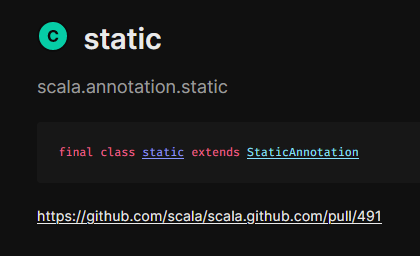I’m pleased to see that Scala is now self-documenting!

I don’t disagree with your reply, except to the degree I was not entirely joking at the end of my post. Some people don’t wish, or rather, don’t deserve, to live on the bleeding edge.
Sometimes when I’m reading a discussion or debate, I think, that sounds very interesting, I wonder what they are talking about. If they are using math symbols, that is especially attractive to me, it’s like seeing some text in a foreign language and you immediately want to know how to say, “Un café americano, s’il vous plaît.”
The reason I didn’t get to the store this morning was that I was reading old topics on the “contributors” forum. I enjoyed reading everyone’s ideas, proposals, and counter-proposals. If reading old PRs is like archaeology, the forum is like opening a box of old letters you found in the attic. My favorite moment was when everyone from the team chimed in to say what a terrible idea “if-then” syntax is and how significant indentation is even worse. Dr. O, who is usually Dr. No, decorously did not attend the SIP meeting that voted down decluttered syntax, already knowing that Dotty would have it anyway. I visited the sips list to see what became of default args that are a function of args in the same param list. I enjoyed this exciting dynamism from the comfort of my armchair, so to speak, that is, from my inexpensive desk chair.
My hope for 2024 is to have a fork of Scala that includes everything ever proposed on the forum, which would be like the everything bagel from “Everything Everywhere All at Once”, but for Scala features. Private method params were proposed twice. I think there should be a rule that after a second proposal, it’s automatically promoted to SIP status. I also think the field needs more puns on proposal as in wedding proposal and proposition as in pick-up line. For example, instead of starting out as proposals, which is rude and presumptuous, SIPs should begin as propositions and evolve into proposals over time, after a seemly period of courtship.
The beauty of Scala-bagel is that all its features are already documented on the forum. One may say, documented at length!
If anyone is interested in presenting at our inaugural conference, a call for papers is forthcoming for “Scala-by-the-Bagel”.
It’s an exciting time to be a Scala developer and documentarian!
I’m not a stranger to strange positions.
But I am practicing yoga in the New Year, which may assist me in this regard.
